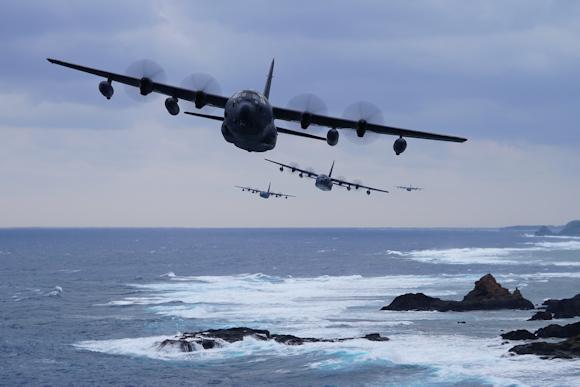The USSOCOM (United States Operations Command) is evaluating the possibility of acquiring an "amphibious" version of the MC-130J aircraft Commando ii (opening photo). As an idea it is certainly not new, however the technologies of the past have not allowed the realization of several projects that, instead, could see the light nowadays.
Already in the 60s, Lockheed had unsuccessfully proposed a seaplane based on the C-130 to the US Navy. Hercules.
During the Second World War the H-4 Hercules program was born, entrusted at the time to the Hughes aircraft (next photo), which consisted in the development of an oversized transport seaplane to replace the type freighters Liberty Ship, which during the crossing of the Atlantic often suffered attacks from German and Italian submarines.
Nowadays, the idea of a Hercules in the seaplane version is back in the news, especially for a possible use in future operational theaters planned by the Pentagon, such as that of the South Pacific.
 On 19 May, in a conference organized by the USSOCOM for industry (SOFIC - Special Operations Forces Industry Conference), Colonel Ken Kuebler unveiled the MAC program (MC-130 Amphibious Capability) which, as the name indicates, consists in giving an amphibious capability to the MC-130J Commando ii, i.e. the version of the KC-130J Super Hercules used by American special forces. The aircraft will therefore be able to operate both on land and on the sea surface.
On 19 May, in a conference organized by the USSOCOM for industry (SOFIC - Special Operations Forces Industry Conference), Colonel Ken Kuebler unveiled the MAC program (MC-130 Amphibious Capability) which, as the name indicates, consists in giving an amphibious capability to the MC-130J Commando ii, i.e. the version of the KC-130J Super Hercules used by American special forces. The aircraft will therefore be able to operate both on land and on the sea surface.
The MC-130J Commando ii it was designed to carry out infiltration / exfiltration missions in hostile or non-permissive areas.
A feasibility study of the program is currently underway. If all goes according to plan, the first modified aircraft should fly no earlier than 2025.
Photo: US DoD / web












